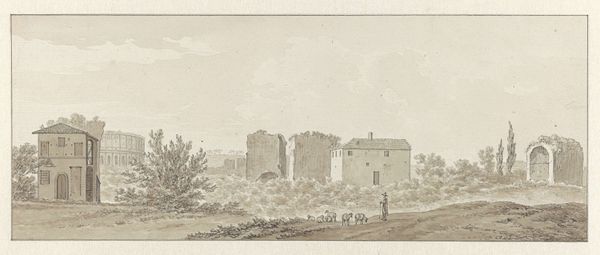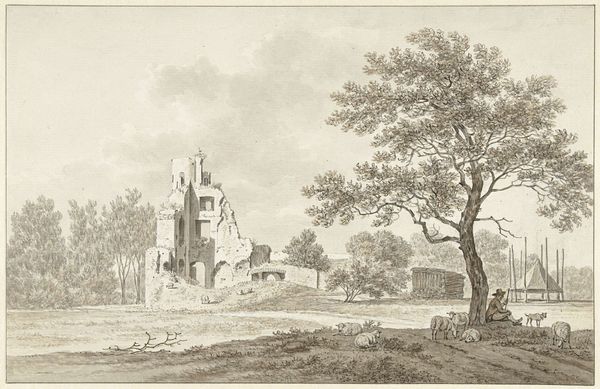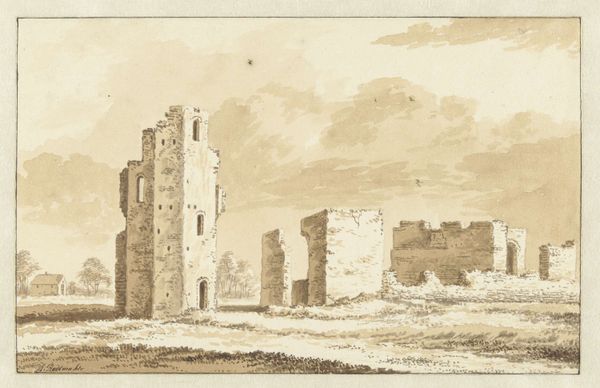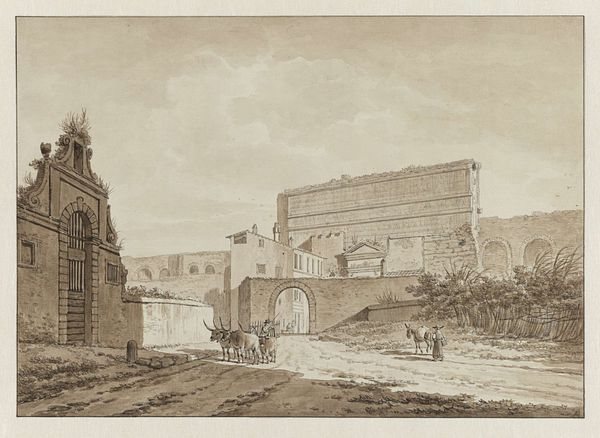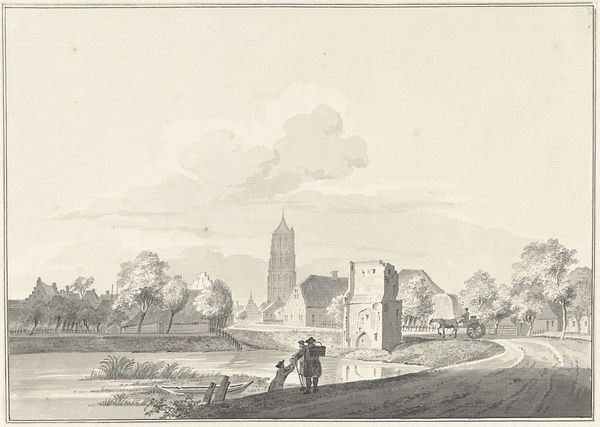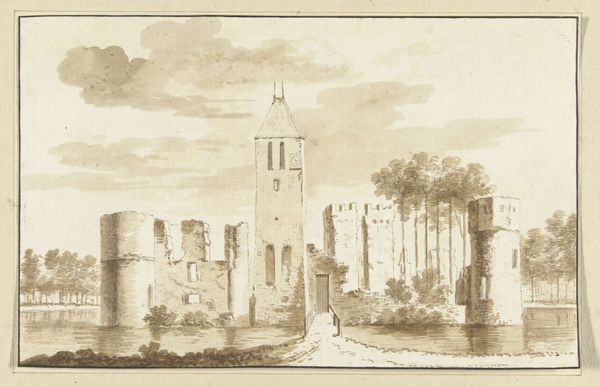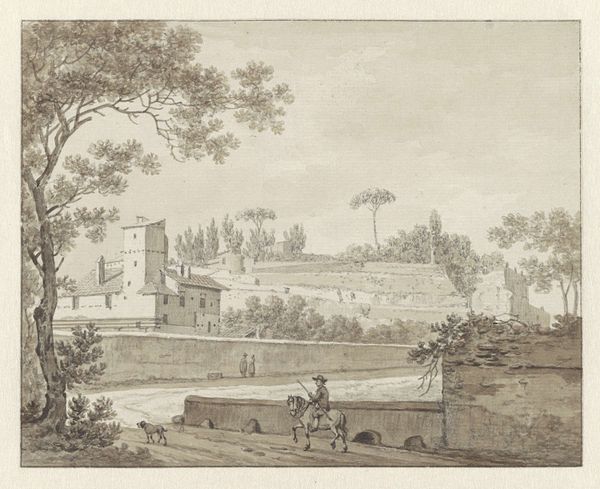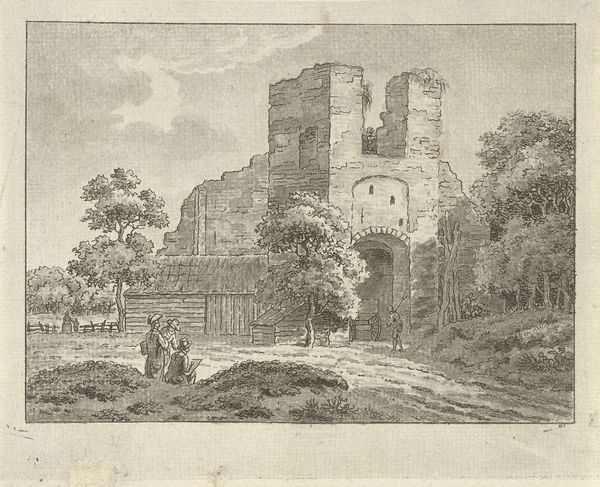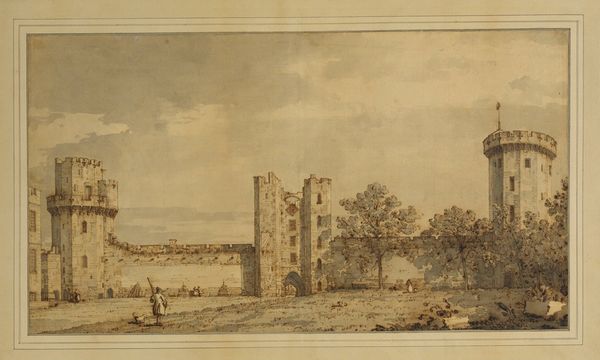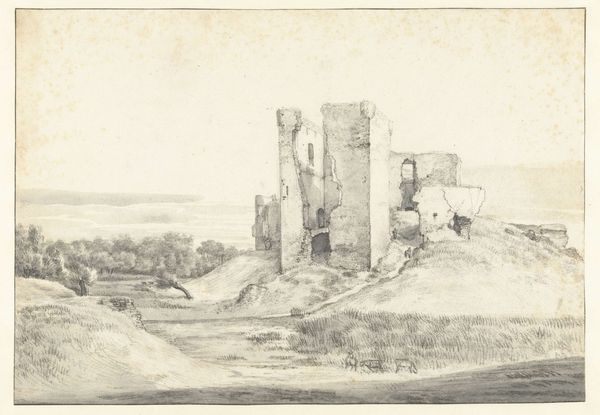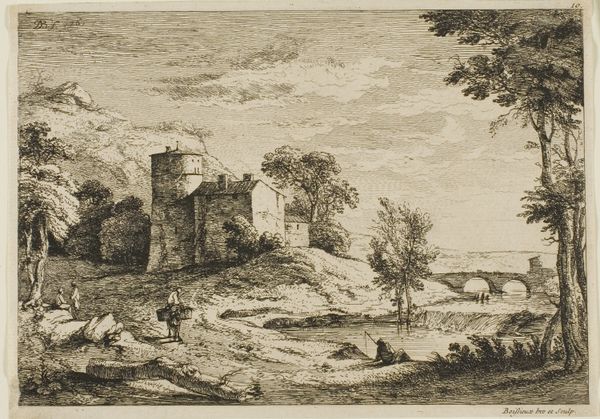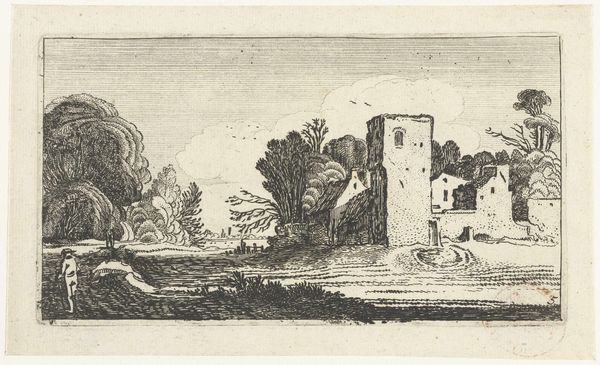
drawing, ink, architecture
#
drawing
#
pencil sketch
#
landscape
#
classical-realism
#
etching
#
ink
#
romanticism
#
architectural drawing
#
architecture drawing
#
architecture
Dimensions: height 348 mm, width 454 mm
Copyright: Rijks Museum: Open Domain
Curator: I am immediately struck by the somber tone, the monochromatic rendering adding to the decay and ruin that’s portrayed. There's a stillness, a silence almost, in the landscape. Editor: That’s a good point. What you're seeing is a work entitled "Ruïnes van de Villa Adriana nabij Tivoli" by Daniël Dupré, dating from between 1761 and 1817. The medium here is ink and pencil on paper, showcasing the ruins of Hadrian's Villa. Curator: Hadrian's Villa as a subject, and Dupré's choice to focus on ruins. This connects to the rise of the Grand Tour and the fascination with classical antiquity. What was Dupré trying to say about power, legacy, or the passage of time by showing these remnants of a once-great empire? Editor: The composition itself is intriguing. Note how the architecture is meticulously rendered with incredible attention to detail, especially considering they are depicted as decaying structures. Dupré employs hatching and cross-hatching, really using the linear qualities of the drawing to model the forms. Curator: Indeed, this Romantic era artist engages with Neoclassical ideals and a deep awareness of architectural structures. It's interesting that the scene is punctuated by figures on a road that serves as a compositional device to lure our eyes into the depth of the image, further emphasizing the human relationship with monumental structures. Editor: Right, their scale against these vast ruins. I mean, it's almost picturesque, isn't it? This notion of the sublime – the power of nature, or the remnants of human endeavor. And there's an element of fantasy, too, don't you think? Despite the drawing style accuracy, it is romanticized, certainly, fitting well within the artistic milieu of the period. Curator: Perhaps this depiction invited reflection not just on the classical world, but on the nature of power itself? Editor: The Villa stands as an emblem. As a formal study, Dupré demonstrates technical skill and keen eye for light and shadow, conveying a feeling of enduring grandeur from ink and pencil on paper. Curator: The artwork certainly provides a powerful reminder of the ever-shifting dynamics between civilization and time.
Comments
No comments
Be the first to comment and join the conversation on the ultimate creative platform.
